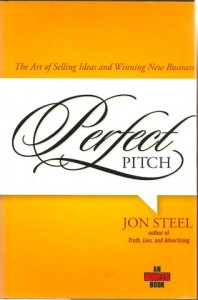The one-sentence summary
Present something ingenious, express it simply, stick to the point, and solve the problem.
- Business presentations could and should be much better.
- It identifies a range of presentation crimes committed every day in business, and the pillars on which successful presentations are built.
- The importance of listening and understanding audience psychology are stressed.
- The rehearsal, the preparation, the leave-behind and the approach after the pitch are more important than the pitch itself.
- Don’t lecture – communicate.
- Bullet points dilute thought, and clip art is a way of saying you have no imagination.
- The more connected we are, the less intelligent we become (the author ceremoniously runs over his Black Berry with his Porsche, but it still works so he has to use his neighbour’s sledgehammer to finish the job)
WHAT’S GOOD ABOUT IT
- There is a lot experience here in anecdote from twenty years in advertising.
- The pitch doesn’t actually have to be perfect – just better than everyone else.
- There is a five-step programme to be followed:
1. Grazing (data dump and gathering raw materials)
2. Looking for meaning (connections, writing down all possible ideas)
3. Drop it (take a break, get away from the problem, view it afresh later)
4. Adapt and distil (making the ideas make sense to anybody, simplicity)
5. Writing the presentation
- There are lots of examples from politics and law as well as marketing (Churchill, the O.J. Simpson trial, London’s 2012 Olympic bid)
WHAT YOU HAVE TO WATCH
- The book is heavy on anecdote, but not on method, so don’t expect a step-by-step guide to how to run the perfect pitch
- Most of the examples are American, so you need to be able to take the broad spirit of them and apply them in a UK context

